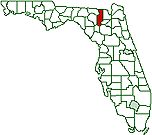Sharing the Beach: Nesting Season for Sea Turtles
Posted July 8, 2013 07:15 am

If you see sea turtle tracks on the beach within the
Archie Carr Refuge, it is most likely a Loggerhead.
Almost 90% of all Loggerhead nesting within the United
States occurs in Florida. And approximately 25% of those
are within the 20-mile stretch of the
Archie Carr beaches. Each species of sea turtle has
distinct tracks..
TAMPA, FL – People aren't the only ones who find Florida's beaches a necessary part of summer. It's nesting season for sea turtles in the state and the endangered animals are laying hundreds of nests every night along the 1100 miles of Florida's coasts.
According to Elizabeth Fleming, Florida
representative of Defenders of Wildlife, it's important
for Floridians to remember that beaches provide a home
to hundreds of species.
"We don't think of them as being wild ecosystems, but
they are, and they're very important for sea turtles and
for many species," Fleming declared.
She said it's important to pick up trash, turn off beach
lights and remove any beach umbrellas or chairs in the
evening, especially during turtle nesting season.
Nesting for Florida sea turtles is on the increase this
year, and appears to be following a 23-year trend of
about 13 percent growth on average.
The continued growth of the sea turtle population is
great news for a species that was almost wiped out
because of a lack of protection and damaged habitat just
30 years go.
Lew Ehrhart, a biology professor at the University of
Central Florida, said the protection offered to sea
turtles under the Endangered Species Act has had much
success.
"A little protection goes a long way," he asserted. "If
we keep the beaches healthy, we can assure their
existence into the next century."
Elizabeth Fleming said that because the beaches are
habitat for turtles and other wildlife, people should
remember to take their trash with them, including
leftover food.
"Take nothing but pictures, leave nothing but footprints
when you go to the beach," she said, adding that "people
don't think about raccoons, sea gulls, even ants,
(which) destroy (turtle) nests every year."
Fleming explained that the animals that might be
attracted by discarded food pose a danger to turtles and
their nests.
Female sea turtles come ashore from May to October to
lay their eggs, which hatch about 60 days later.
Lights on the beach can also confuse the turtles and
cause them to go the wrong direction, away from the
water.
Photos and links added by the Observer
